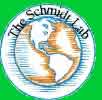







Web Links
Microbial responses to nitrogen additions
in alpine tundra soil
Melany C. Fisk and Steven K. Schmidt
Soil Biology and Biochemistry (1996)
Vol. 28 No. 6: 751-755
 |
|||||||||||
 |
 |
 |
 |
 |
 |
 |
|||||
|
Web Links |
Microbial responses to nitrogen additions
in alpine tundra soil
|
||||||||||
|
Melany C. Fisk and Steven K. Schmidt
|
|||||||||||
|
|
|||||||||||
| Soil nitrogen transformations were measured the year following nitrogen fertilization of alpine Kobresia myosuroides meadows to determine the influence of greater plant production and N content on net N mineralization and the microbial N pool. Previously fertilized soils contained substantially greater amounts of organic N than control soils. The average increase in soil organic N accounted for 75% of total added N and, although variable, this quantity suggests a large capacity for retention of added N in these soils. Nitrogen transformations and more active pools also responded to fertilization. Net N mineralization, nitrification and soil inorganic N concentrations clearly were higher in fertilized than in control plots throughout the snow-free season. The most pronounced increase in mineralization in fertilized relative to control soils occurred during the second half of the snow-free period (mid-July-October), primarily after the short alpine growing season (June-mid-August). Although the soil microbial N pool was not affected by fertilization during the growing season, microbial N did increase in the fall in fertilized compared to control soils, coinciding with the time of greatest N mineralization. The late season net uptake of N into the microbial pool exceeded by several times present rates of anthropogenic N inputs to these soils, and the microbial biomass may act as an increasingly important short-term sink for available N if N deposition to these areas continues to increase. | |||||||||||
Soil Biology and Biochemistry (1996)
Vol. 28 No. 6: 751-755
|
|||||||||||